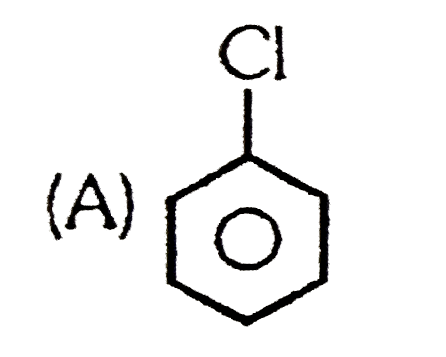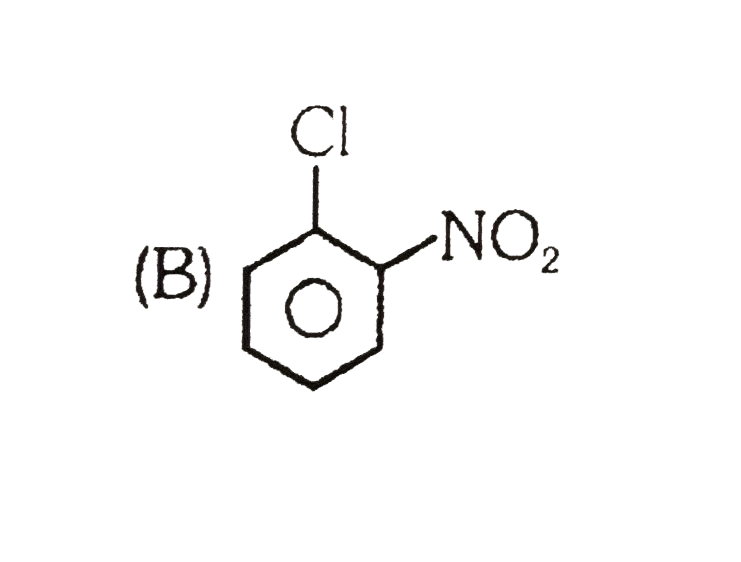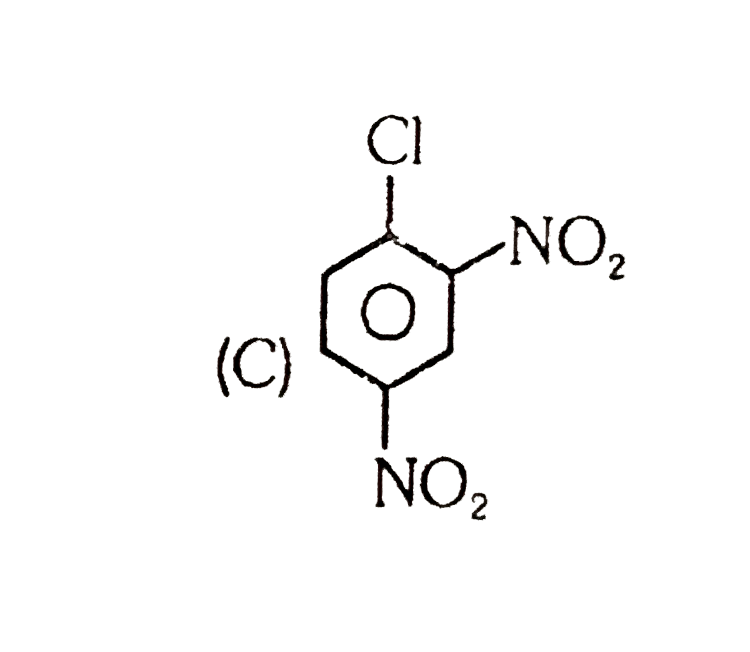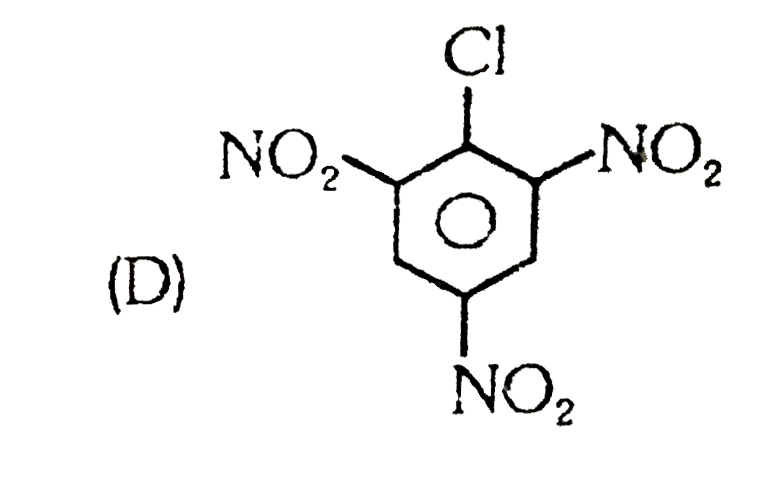Which of the following undergoes Hydrolysis most easily:




The correct Answer is:D
To determine which compound undergoes hydrolysis most easily, we need to analyze the options based on the presence of electron-withdrawing groups (EWGs). Here’s a step-by-step breakdown of the solution:
Step 1: Understand Hydrolysis
Hydrolysis is a chemical reaction involving the breaking of a bond in a molecule by the addition of water. In the context of organic compounds, hydrolysis often involves the cleavage of a carbon-chlorine (C-Cl) bond.
Step 2: Identify the Role of Electron-Withdrawing Groups
Electron-withdrawing groups increase the polarity of the C-Cl bond. The more polar the bond, the weaker it becomes, making it easier for the bond to break during hydrolysis. Therefore, the presence of EWGs enhances the hydrolysis process.
Step 3: Analyze the Options
We need to look at the given options and identify how many electron-withdrawing groups are present in each compound. The compound with the highest number of EWGs will undergo hydrolysis most easily.
Step 4: Count the Electron-Withdrawing Groups
- Option A: Count the number of EWGs.
- Option B: Count the number of EWGs.
- Option C: Count the number of EWGs.
- Option D: Count the number of EWGs.
Assuming Option D has three electron-withdrawing groups, it will have the highest polarity in the C-Cl bond.
Step 5: Conclusion
Based on the analysis, the compound in Option D, which contains three electron-withdrawing groups, will undergo hydrolysis most easily due to the increased bond polarity and decreased bond strength.
Final Answer
Option D undergoes hydrolysis most easily.
---
Hydrolysis is a chemical reaction involving the breaking of a bond in a molecule by the addition of water. In the context of organic compounds, hydrolysis often involves the cleavage of a carbon-chlorine (C-Cl) bond.
Electron-withdrawing groups increase the polarity of the C-Cl bond. The more polar the bond, the weaker it becomes, making it easier for the bond to break during hydrolysis. Therefore, the presence of EWGs enhances the hydrolysis process.
We need to look at the given options and identify how many electron-withdrawing groups are present in each compound. The compound with the highest number of EWGs will undergo hydrolysis most easily.
- Option A: Count the number of EWGs.
- Option B: Count the number of EWGs.
- Option C: Count the number of EWGs.
- Option D: Count the number of EWGs.
Based on the analysis, the compound in Option D, which contains three electron-withdrawing groups, will undergo hydrolysis most easily due to the increased bond polarity and decreased bond strength.
Option D undergoes hydrolysis most easily.
Topper's Solved these Questions
- BOOK - ALLENCHAPTER - ELECTROCHEMISTRYEXERCISE - MISCELLANEOUS SOLVED EXAMPLES29videos
ELECTROCHEMISTRY
- BOOK - ALLENCHAPTER - ELECTROCHEMISTRYEXERCISE - COMPREHENSION TYPE18videos
ELECTROCHEMISTRY
- BOOK - ALLENCHAPTER - CHEMISTRY AT A GLANCEEXERCISE - ORGANIC CHEMISTRY472videos
CHEMISTRY AT A GLANCE
- BOOK - ALLENCHAPTER - HYDROCARBONEXERCISE - MCQ15videos
HYDROCARBON
Similar Questions
Knowledge Check
- Question 1 - Select One or More
Which of the following do not undergo hydrolysis?
AGlucoseBFructoseCCane sugarDMaltose - Question 2 - Select One
Which of the following undergoes decarboxylation most readily on being heated ?
A B
B C
C D
D
Which of the following salts undergoes hydrolysis ?
View SolutionWhich of the following chlorides hydrolyses most easily?
View SolutionWhich of the following compound undergo hydrolysis most easily :
View SolutionWhich of the following do not undergo hydrolysis?
View SolutionWhich of the following undergoes decarboxylation most readily on being heated ?
View SolutionWhich chloroderivative of nitrobenzene among the following would undergo hydrolysis most readily with aqueous NaOH?
View Solution

